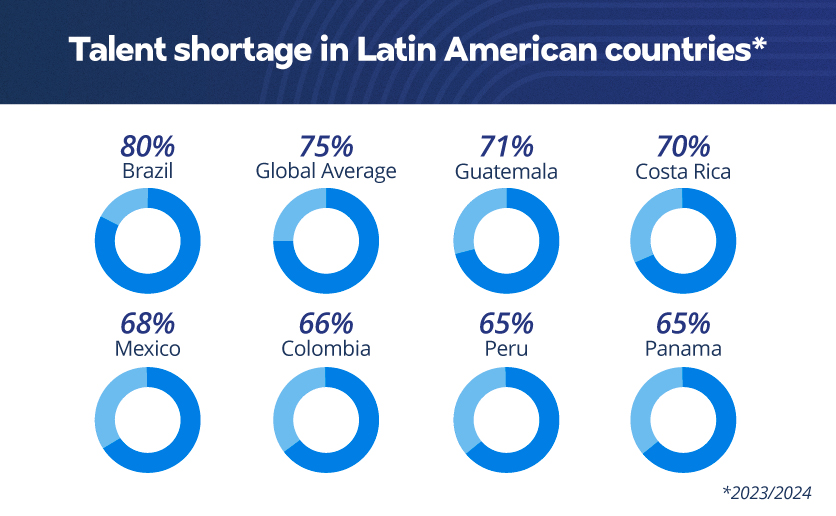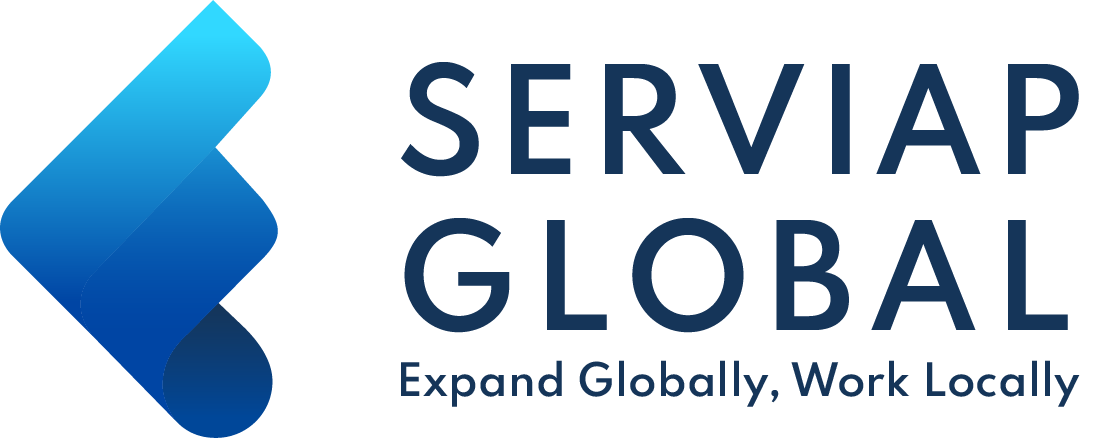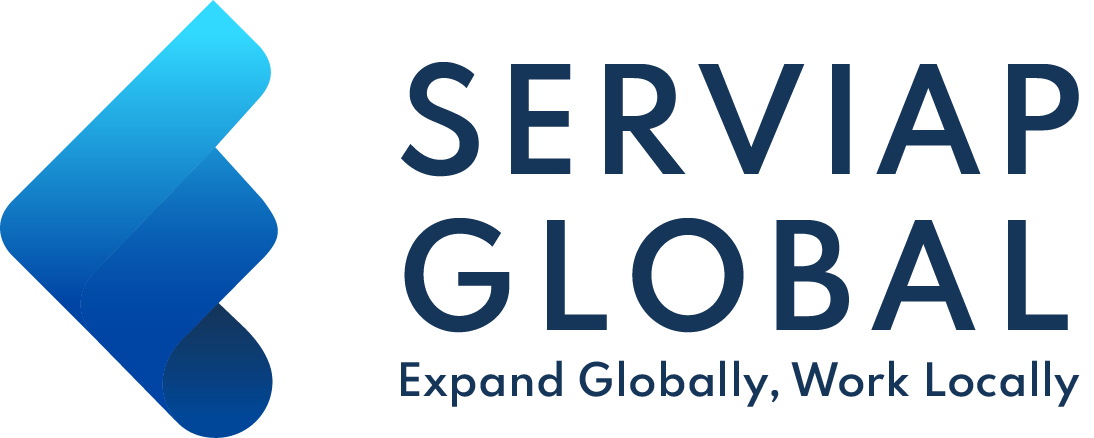Table of Contents
Over recent years, the global talent shortage has been a major challenge for businesses worldwide. As of 2025, we are still experiencing a peak in employers reporting difficulty in filling roles.
Companies are struggling to find the right professionals to fill critical roles, especially in sectors like healthcare, consumer goods, information technology, and logistics.
The skills gap, demographic shifts, and evolving work preferences all contribute to the difficulty of sourcing top talent. However, with the right strategies, businesses can overcome these challenges and build resilient, diverse, and highly skilled teams.
Global talent shortage: an overview
(Source: ManpowerGroup)
In the last decade, employers globally have been dealing with a steadily growing talent shortage. The biggest impact happened after the Covid-19 pandemic in 2020 when this increase took an even bigger leap.
In 2024, while there was a slight decrease of 2% in comparison to the previous year, the global talent shortage is still more than double the average from 10 years ago.
Several factors are fueling the talent gap, such as emerging technologies and automation that are shifting job requirements faster than workers can upskill.
Additionally, many developed nations are experiencing declining birth rates and aging populations, reducing the number of working-age professionals.
Along with that, younger generations prioritize flexibility, work-life balance, and career growth, making it harder for traditional employers to attract talent.
3 tips for overcoming the challenges of hiring skilled employees
Beating the global talent shortage in 2025 requires a proactive approach. Companies that embrace global hiring, invest in workforce development, and create flexible, engaging work environments will be better positioned for success. Below are essential tips for getting ahead and overcoming this challenge.
1) Leverage global talent pools
According to a report commented by AI Business, 98% of execs plan to expand their global presence in the next 12 months, while 72% of leaders are ready to look to other countries to meet their talent needs.
Companies can tap into international markets to source skilled professionals and find cost-effective solutions. Third-party assistance, such as getting remote EOR services, allows businesses to hire talent in different countries without setting up local entities, which simplifies compliance and expands the talent pipeline.
Furthermore, hiring internationally gives you the opportunity to access talent pools that can be less saturated in other countries. In Latin America, for example, plenty of countries present lower talent shortage averages in comparison to Europe and the overall global average.

(Source: ManpowerGroup)
2) AI and automation in hiring
AI can be implemented in business strategy to project market changes and scalable opportunities. This includes the hiring process, as well as managing personnel. It can also change the daily worklife, as the AI at Work report shows employees are three times more likely adapt to AI than leaders expect.
The AI-driven recruitment tools can streamline hiring processes by identifying the best candidates quickly and efficiently. They can also help reduce bias and improve decision-making.
With AI technologies developing exponentially, tools now have the potential to manage the full employment lifecycle and provide real-time guidance and expertise on labor laws, vacation policies and payroll processing.
3) Improve branding and work experience
A strong employer brand helps companies stand out in the job market. Competitive salaries, benefits, DEI initiatives, and a strong workplace culture can attract and retain top talent.
A flexible work model enables companies to attract professionals who prefer remote or hybrid work. This also allows businesses to hire talent from regions with lower competition and costs.
Investing in employee development ensures that existing workers acquire in-demand skills. Offering continuous learning opportunities through online courses, mentorship programs, and certifications can bridge the gap.
How useful was this post?
Click on a star to rate it!
Average rating 0 / 5. Vote count: 0
No votes so far! Be the first to rate this post.
We are sorry that this post was not useful for you!
Let us improve this post!
Tell us how we can improve this post?




